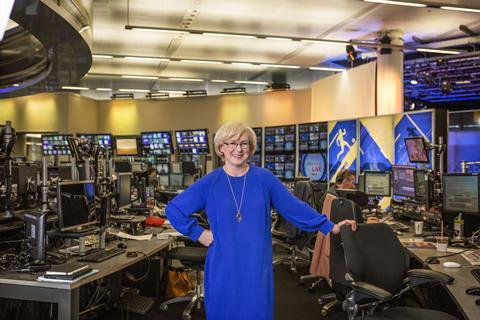Barbara Slater, director of BBC Sport, reflects on the key moments of sports coverage on the BBC as it celebrates its 100th birthday

It was the year Charles Lindbergh’s solo transatlantic flight touched down in the United States – a pioneering event that would change the world of travel. Transformation of that scale was upon us in sport too – as Marconi-inspired radio sets first broadcast the sound of tennis balls being hit back and forth on Centre Court. It was 1927. A world between wars, two journeys into the unknown.
The newly named British Broadcasting Corporation was responsible for those first radio commentaries from Wimbledon. Just over 20 years later, when London hosted its second Olympics, it would beam the first moving pictures from a sporting event to homes in the UK.
Wimbledon ’67 would herald the next step change – sport in glorious colour. Snooker, in particular, would never be the same again and ‘Whispering’ Ted Lowe’s casual observation “for those of you watching in black and white, the pink is next to the green” would go down in commentary folklore.
In 2000, the Sydney Olympics provided the challenging deadline for the launch of the BBC Sport website. Streaming sports, live text services, on-demand clips and more would follow. Who’d have guessed that just over 20 years later that same website would still be the market leader, with more than 20 million weekly users? And who’d have guessed that despite the billions on offer elsewhere, more people would still be watching and listening to sport on the BBC? When it broadcast the third London Olympics – in 2012 – nine out of 10 homes tuned in.
Nearly 100 years ago, the secret of the BBC’s sporting success was simple; to cover the stories and events that matter. That hasn’t changed
Nearly 100 years ago, the secret of the BBC’s sporting success was simple; to cover the stories and events that matter. That hasn’t changed. Taking sport to the widest possible audience remains our guiding light.
But so much is different, of course. The way people consume media – and that includes sport – is fast changing. Sports are rethinking how they engage with the most loyal fans and the once-in-whiles. High rates of inflation have been prevalent in sports rights for a decade or more. To stand still is to fast become irrelevant.
I’m extremely proud to lead BBC Sport; to take everything I learned from a sporting career and apply it in the media. I’m not alone – it’s in the DNA of everyone that works here.
Take the journey that women’s football has been on, for example. Back in 2009, our coverage of the European Championship reached just over two million people in the UK. Fast forward to 2022, and after a decade of BBC investment and editorial devotion, the same event is reaching more than 10 times that number. There have been a whopping nine million more fans of women’s football in the past year alone. A young girl in 2022 has so many more opportunities to kick a ball than a young girl did in 2009. Players, staff, governing bodies and commercial supporters have played a hugely significant role. Like Chloe Kelly’s extra-time strike, the BBC has done its bit too. That really matters to us.
I’m often asked about my predictions for the future of free-to-air sports broadcasting in five, 10 or 20 years’ time. I’d like to think that while inspiration remains essential to the regeneration of a sport’s fanbase, free-to-air sport will be a priority. The UK Government also has a critical role to play as it tackles the increasingly urgent need to make the Listed Events regime future-fit.
The only certainty for all of sports broadcasting is that it must be much, much greener. Environmental sustainability has rightly muscled its way in between the nexus of customer satisfaction and the cost of doing business. This isn’t a journey that Lindbergh or Marconi could have foreseen, but this next journey has the clearest of destinations.
Barbara Slater is director of BBC Sport




No comments yet